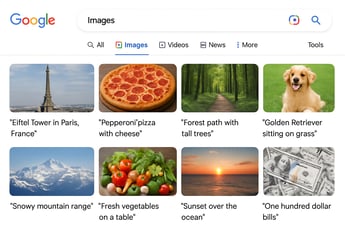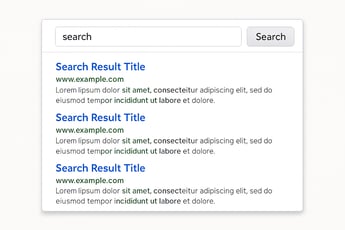The Website Hygiene Playbook for HubSpot Marketers

Most marketers treat “website hygiene” like laundry day. You know you should do it, but you keep pushing it off until something smells weird.
If you’re managing a HubSpot website, that smell shows up as broken pages, missing metadata, outdated schema, and sloppy links. Your traffic dips, your click-throughs slide, and Google (or even AI assistants) quietly start skipping your pages.
We’re on a mission at Smuves to help HubSpot Webmasters prioritize good website hygiene, because the cleanest sites perform better for humans and machines.
This post walks through how to maintain a clean site and why it matters way more than most teams realize.
What “Website Hygiene” Really Means
Think of your website like your home. It doesn’t collapse overnight. It just slowly collects clutter like dead links, old blog posts, outdated media, weird redirects, stale metadata.
Website hygiene is the ongoing process of cleaning, organizing, and updating your site so it remains crawlable, consistent, and accessible.
That includes all the unglamorous stuff:
- Titles and meta descriptions that actually match page content
- Alt text for every image
- Structured data that aligns with content
- Clean, readable URLs
- Internal links that aren’t broken or circular
In short, hygiene is the foundation of trust. Not just for search engines, but for users and AI models that are starting to “read” your website like a research paper.
Why Website Hygiene Matters (More Than You Think)
A clean website doesn’t just “look nice.” It impacts almost everything:
Search Engine Visibility
Metadata, schema, and link structure help crawlers understand your content. Missing or duplicate tags confuse them. A few broken pages might not tank your SEO, but hundreds of small issues absolutely will.
“Without proper metadata, your website weakens its ability to show relevance to search engines.”
AI Engine Optimization (AEO)
Large language models like ChatGPT, Gemini, and Perplexity now cite from clean, structured content. AI systems prefer sites that are well-labeled, factual, and consistent.
If your data is messy or your schema’s missing, you’ll get skipped for inclusion in AI summaries. Simple as that.
Accessibility & User Trust
Alt text, heading order, link clarity... all of that signals professionalism. Users might not say it out loud, but they feel it. Clean structure builds confidence. Broken UX breaks it.
The Four Pillars of Website Hygiene
These are the main hygiene categories to focus on, each one affects both SEO and AEO.
1. Metadata: Titles, Descriptions, and Previews
Your metadata is your site’s storefront window. It’s often the first and only impression you get in search or social previews.
Title tags
- Keep under 60 characters if you can
- Make sure they reflect the content, not just keywords
- Avoid duplicating across pages
Meta descriptions
Your meta description is your “chance to pitch your page” to searchers, not just summarize it. It won’t directly boost rankings, but it affects clicks.
Media previews (Open Graph & Twitter Cards)
Ever shared a link that shows the wrong image? That’s bad hygiene. Make sure every page has the right OG tags and a featured image with alt text.
Your metadata should tell a story; short, clear, and relevant. It’s the tiny ad for your page that follows it everywhere.
2. Schema & Structured Data
Structured data is how you communicate with machines. Schema markup tells Google and AI what your page is - an article, FAQ, product, or review.
Common schema types that help HubSpot sites:
- Article (for blog posts)
- Organization (for your brand info)
- FAQ (for help pages or explainer content)
- HowTo (for encoding process)
- Product (if applicable)
Make sure your schema matches the content. Adding fake schema (like Product on a blog) can hurt credibility. Google’s guidelines are worth bookmarking.
Pro tip: Include quotes and citations within your schema to boost content credibility. It helps Google and AI tie statements back to authoritative sources.
3. Media Hygiene: Alt Text, File Names, and Compression
Images are often the dirtiest part of a site. It is usually missing alt text, massive file sizes, duplicate uploads, and unclear file names.
Alt text is simple but powerful:
- Describe purpose, not just what you see
- Keep it under 125 characters
- Skip phrases like “image of” (screen readers already announce it)
As Level Access notes, good alt text serves both accessibility and SEO. And it’s becoming essential for AI. Many models read alt text directly when scanning web content.
Also check file sizes and formats. A 4MB PNG kills page speed. Use WebP when possible and compress everything. Site speed is hygiene too.
4. Links & URL Structure
If your internal links are broken or your URLs are a mess, it hurts both crawlers and humans.
Here’s what clean link hygiene looks like:
- Descriptive anchor text (“learn more about HubSpot SEO” beats “click here”)
- No redirect chains longer than one hop
- Consistent URL patterns (/blog/seo-metadata-tips not /index.php?id=54321)
- Regular scans for broken links
Use tools like Ahrefs, Screaming Frog, or even Google Search Console’s crawl errors to keep tabs. HubSpot's SEO tool can also list broken links.
Broken links might feel minor, but over time, they rot your site from the inside.
How Website Hygiene Impacts AI Discovery
This is the part marketers often overlook. AI systems like ChatGPT, Claude, and Perplexity rely on structured, consistent, well-labeled data to generate answers and cite sources.
If your site’s hygiene is solid, you increase your odds of being referenced (or surfaced) in AI answers, what we call AI Engine Optimization or AEO.
That means:
- Clear metadata = better context
- Schema = better classification
- Alt text = better media understanding
- Internal links = stronger topical authority
You don’t “optimize for AI” by keyword-stuffing prompts. You do it by maintaining website hygiene.
The Website Hygiene Routine (Template)
You don’t need to overhaul everything at once. Treat it like ongoing care. Here’s a practical schedule:
|
Frequency |
Task |
|
Weekly |
Check for broken links, redirects, and missing alt text |
|
Monthly |
Review metadata (titles, descriptions, social previews) |
|
Quarterly |
Audit schema and structured data |
|
Biannually |
Full crawl of site for outdated pages, duplicate content, and orphaned URLs |
This cadence keeps your site clean without creating another “big project” on your plate.
How to Automate Website Hygiene Inside HubSpot
Manually updating all this? Painful. Especially when you’re managing hundreds of pages.
That’s where Smuves helps. Our tool lets HubSpot Webmasters:
- Bulk scan for missing or outdated metadata, alt text, and links
- Filter problem pages in one dashboard
- Export everything into Google Sheets
- Edit in bulk (even use AI suggestions right in Sheets)
- Push updates back into HubSpot instantly
It’s hygiene at scale... without needing to manually open every page or template. Instead of guessing what’s wrong, you see it, fix it, and move on.
Bringing It All Together
Website hygiene isn’t the “fun” part of marketing. It’s the part that keeps everything else working.
When your site is clean:
- SEO improves because search engines trust your structure
- Accessibility improves because users can actually navigate it
- AI systems trust your signals and start referencing your pages
Good hygiene compounds over time. Messy sites stall growth.
So next time you publish a new post or redesign a page, think hygiene first: Is the metadata accurate? Is the schema valid? Do my links work? Is there alt text?
That’s the checklist of modern web stewardship.
Final Thought
If your HubSpot site feels like it’s gotten messy or bloated, start small. Fix one category at a time. You’ll be shocked how much smoother your site, and analytics, feel afterward.
At Smuves, we’re on a mission to help HubSpot Webmasters prioritize good website hygiene. Because when your foundation is clean, the rest of your site can shine.
Check us out and see how you can clean up your site without the headache.


